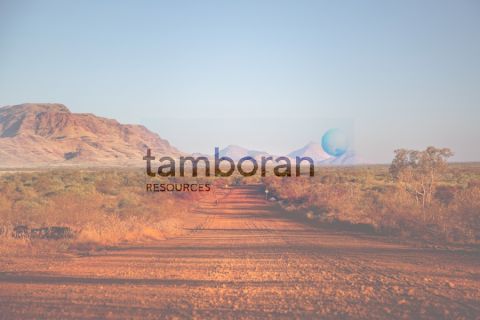Autonomous underwater vehicles (AUVs) have the potential to become stars someday, but at this point, they're character actors, handling survey and observation tasks in the great underwater oil and gas operations theater.
AUVs map pipeline routes and survey the ocean floor to help operators locate the best sites for subsea wellheads and manifolds while avoiding hazardous spots in the landscape.
C&C Technologies of Lafayette, La., recently completed a Gulf of Mexico contract with Shell International Exploration & Production Inc. for the Magnolia, Habanero, Llano and Glider AUV survey projects in water depths from 2,000 ft to 3,500 ft (610 m to 1,068 m).
Its AUV collects high-resolution images to help the oil and gas industry with field development in those areas. More than that, C&C Technologies can use its underwater acoustic modems to send images acoustically to the surface.
That means, for example, if an AUV finds a crevice while surveying a path for a pipeline, the operator can direct the AUV on a different course to bypass the impassable section without having to remove the AUV from the water and download the information, according to Charlie Spann, AUV project manager for the geophysical department of C&C.
C&C has completed more than 12,420 miles (20,000 km) of commercial mapping since January 2001. It says its AUV produces more accurate data with better reliability than deep towed survey systems, and can do it while reducing survey time by more than 70%.
The Hugin also explored the path for a 9-mile (14-km) tieback from Ocean Energy's Zia field in Mississippi Canyon 296 to a Marathon platform in South Pass 89.
That's all survey work, not the kinds of jobs the work-class remotely operated vehicles (ROVs) handle as they help lay and hook up pipelines and help with deepwater construction in the Gulf of Mexico. That's a big difference.
The future holds more, Spann said. The technology is almost at the point where AUVs can begin handling work-type jobs. That means a lot more than moving from point A to point B and collecting images. It requires the sophistication to move to a valve on a subsea wellhead, recognize or transmit a picture of that valve and the valve's position, and turn the valve and verify that the valve has been turned to the right position.
That time is not here yet, but it's coming. Not everyone wants to be on the ground floor of that move.
A similar point of view comes from Dick Frisbie, senior vice president for deepwater technology for Oceaneering International. "AUVs will completely take over the survey market. Some time along the road, there will be work-class AUVs, and we want to dominate that market," he said.
Right now, Oceaneering operates AUVs in cooperation with Boeing and Fugro. It has one in the Gulf of Mexico.
Frisbee sees AUVs as another major step for the underwater industry. He's not particularly interested in the survey capability. He'd rather stick with the work-class jobs.
Where today's ROVs are tied by the length of their tethers to the garage, an AUV of the future might fly out autonomously to subsea wells 1,500 ft (458 m) apart. Once it gets there, the AUV may someday have the capability of making sure a valve is in the right position.
The industry is working on some technology that will allow the AUV to do that kind of work remotely. One such technology involves bar code identification.
The AUV of the future, Frisbie said, "will have the capability to inspect as an AUV but convert to an ROV on the job."
Thales GeoSolutions uses the Sea Oracle, a small, untethered, programmed AUV with sensors and computer power for accurate navigation. The AUV was developed in partnership with Bluefin Robotics, a company that has been building AUVs since 1989.
"Thales Geosolutions has made a significant investment in AUV technology and will be entering the E&P market this summer with the Sea Oracle. Thales plans to provide E&P customers with high-quality data using AUVs in support of geosciences and engineering projects," said Michael Barnes, vice president of marketing, Americas region, for Thales.
Until now, most of the use of the torpedo-shaped survey instruments has been for the scientific community, but now that use is extending into the commercial market.
The Sea Oracle is 11.5 ft (3.5 m) long with a nose cone, a midsection and a tail cone.
The nose cone contains the battery pack, the drop weights and forward sonar. The midsection houses sensors and data logging equipment. The tail section holds the main vehicle computer, the navigation sensors, the propulsion system and the telemetry system.
The AUV works on a 24-hour cycle, which allows an hour for descent, 20 hours of surveying, usually along a pipeline, a 1-hour return to the surface and a 2-hour recovery time during which technician download the collected data and replace the batteries to prepare for the next run.
It can travel at speeds between 3 and 4 knots. It has a design depth of 15,749 ft (4,800 m) of water but its operational depth is 9,843 ft (3,000 m).
Ian Edmonstone, ROV and survey manager with Subsea 7, said his company also has a 3,000-m AUV in the commercial arena, and he also has high hopes for the technology for the future.
"There is no doubt that the capabilities of the AUVs will increase with advancements in technology. We may reach a point where complex intervention tasks can be undertaken via AUV," he said.
Recommended Reading
CEO: Coterra ‘Deeply Curious’ on M&A Amid E&P Consolidation Wave
2024-02-26 - Coterra Energy has yet to get in on the large-scale M&A wave sweeping across the Lower 48—but CEO Tom Jorden said Coterra is keeping an eye on acquisition opportunities.
E&P Earnings Season Proves Up Stronger Efficiencies, Profits
2024-04-04 - The 2024 outlook for E&Ps largely surprises to the upside with conservative budgets and steady volumes.
U.S. Shale-catters to IPO Australian Shale Explorer on NYSE
2024-05-04 - Tamboran Resources Corp. is majority owned by Permian wildcatter Bryan Sheffield and chaired by Haynesville and Eagle Ford discovery co-leader Dick Stoneburner.
Uinta Basin: 50% More Oil for Twice the Proppant
2024-03-06 - The higher-intensity completions are costing an average of 35% fewer dollars spent per barrel of oil equivalent of output, Crescent Energy told investors and analysts on March 5.
Chord Energy Updates Executive Leadership Team
2024-03-07 - Chord Energy announced Michael Lou, Shannon Kinney and Richard Robuck have all been promoted to executive vice president, among other positions.





